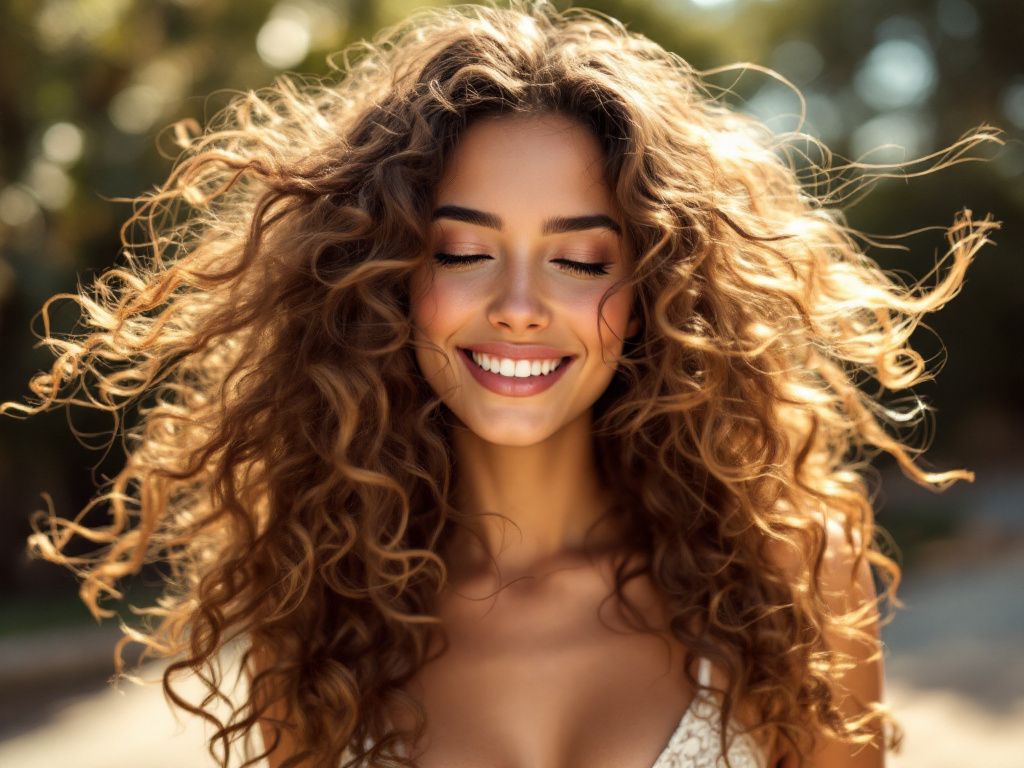
Have you ever gazed into the mirror and wondered if those playful curls will ever surrender to gravity and become naturally straight? It’s a question that has puzzled many a curl-bearer and even sparked some heated debates, reminiscent of discussions about whether pineapple belongs on pizza (spoiler: it totally does if you like it). Today, we’re diving into the curious possibility of curly hair morphing into straight strands without the interference of heat tools or chemical relaxers. Why? Because hair texture changes as you age, due to hormones, or through lifestyle factors, which might just hold the secret.
Understanding Hair Texture Changes
Before we mad dash into whether we should hold onto hope for natural hair transformations, it’s a good idea to grasp the hows and whys of hair texture changes. They happen, that’s for sure—not overnight with some magical spell, but slowly and mysteriously over time.
So How Does Hair Texture Actually Change?
Okay, picture this: hair is like an unpredictable friend—it can surprise you over the years. The texture of your hair is determined by the shape of your hair follicles. Round follicles produce straight hair, while oval ones lead to curls and waves. But what happens when hair starts misbehaving differently one day to the next?
Hormonal Shifts and Hair Texture
Hormones play a huge part. They rule our bodies like they’re getting paid overtime just to mess with us. Puberty, pregnancy, menopause—each stage shakes up the cocktail of hormones that affect everything from hair growth to its curl pattern. Some folks find their curls loosening post-pregnancy or becoming tighter with menopause. Each hormonal quake rocks the balance and can subtly alter hair texture.
Aging and Lifestyle: The Long Game

As we age, hair naturally becomes a bit of an enigma. The production of certain proteins slows down. Like the collagen and keratin that offer structure and resilience? Less of them sticks around as the years tick by. Couple this with environmental stressors like pollution or even how often you hit the pool, and you start seeing the variability in hair structure.
Changing diets and stress levels also wield their power here. Nutrients crucial for hair health—think biotin, zinc, vitamins—play their part in maintaining that springy curl, or hey, perhaps aiding a straight hair transformation.
Explaining the Natural Dynamics
You’re following so far? Good! Let’s delve deeper into whether Mother Nature can nudge your curly tresses towards the straight side of the spectrum without booking a salon appointment.
Can Genetics Flip the Curl Script?
It starts way back in the chain of generations. If you have curly hair, just know someone’s great-great-something passed that down with love. Genetics can be unpredictable. A child might be born with curly hair only to have it relax into waves as they grow up or vice versa. Think of it as a familial touch-up you’re not quite prepared for. Strange, but surely fascinating!
Environmental Influence on Your Mane
Can regular sun-exposure or perhaps deciding on a longer gig by the ocean shift texture? That sunny halo doesn’t just gift you with sun-kissed highlights, but potentially dryer hair too. Saltwater weakens keratin bonds and could make hair fall limp and straighter, at least for a while.
On the flip side, a very humid climate introduces more curl and puffiness into hair. It’s a tug-of-war between Mother Nature and your natural beauty—the team in your corner just might surprise you with some texture changes.
The Influence of Health and Diet
Hair health starts from the inside out. Iron, omega-3 fatty acids, and vitamin D positively impact hair health, helping hair remain flexible and healthy. Often, people note that improving their overall well-being, randomly enough, brings subtle bounce back to their curl. Eating right might not turn street-level curls into high-street sleekness, but a marked improvement is always on the cards.

This calls for an extra sip of freshly squeezed orange juice because staying healthy feels good even if hair shifts are just a side effect!
Can Lifestyle Changes Straighten Curly Hair?
Now, let’s loop around to lifestyle—an aspect many overlook when dreaming of smooth, straight locks. Can subtle shifts lead to straighter hair? Let’s explore.
Haircare Habits Making a Difference
How you tend to that head of hair matters big-time. Regular conditioning, gentle shampoos, and minimal styling abuse breathe life and… possibly, smoothness into hair.
- Deep Conditioning: Hydration is foundational. Using rich, creamy deep conditioners seeps moisture back, and can relax curls in the long haul. Give this approach consistent shots, you never know when your curls might soften up thanks for the nourishment.
- Routine Overhaul: Lay off intense heat styling or harsh brushing when hair’s frail. The tension and heat curate unneeded stress, steeling some health and that original zing curl has.
Coping with Stress and Quality Sleep
Stress wreaks havoc on hair (and everything else, let’s face it). If hair texture’s gone rogue on you, finding your zen might ground it again. Trusted yoga sessions, brief meditations, or even a good old-fashioned nap contribute to hair health more than you might think.

Fun fact? Improved sleep contributes not just to texture modulation but also to rate of hair growth—getting some z’s could be your sly partner here.
Tapping into the Power of Natural Remedies
Everyone’s got tales of grandmother-approved concoctions battling with curly indistinction. While the science on these is hit or miss, cultural traditions showcase treatments that promise subtle changes.
- Coconut Milk Role-Coaster: Some swear by coconut milk combined with lemon juices applied for a couple of hours for taming curls. Weekend spa night idea, anyone?
- Aloe Vera Detanglement: Aloe juice resembles enzymes that make hair feel incredibly soft and could downplay curls for a naturally straighter effect, albeit a mild one. Slather it like you mean it.
Mixing remedies into your self-care ritual never hurts, though guaranteed results aren’t etched in stone.
Embracing Changes, Naturally
Returning to the million-dollar question—”Can curly hair become straight naturally?” The answer is a mixed one. It’s not usually possible for fully curly hair to transform entirely without heat or chemicals, but your personal journey can definitely shift your hair texture. Think of it this way: rather than reaching for what your hair’s not, embrace it. If it softens? Great. If not? Still great.
Recognize from history and advice that taking good care alters hair texture modestly, caring health allows surprises. Your hair’s canvas? Yes, it bends but doesn’t often break—accept together every lieu in life, worthy story with authentic hair tusks!
So next time you’re pondering in that mirror, embrace curiosity and experiment. Take the mellow, gradual path, fueled by wisdom read today, with a sprinkle of international flair! If change saunters in over time, dance it. If not? It’s still your unique story to tell.
Frequently Asked Questions
Can curly hair become straight naturally?
No, there is no natural method to permanently straighten curly hair. However, certain techniques like wrapping, banding, or adopting different hair care regimens can help loosen curls temporarily[1][2][4).
How often can you straighten your curly hair without damaging it?
The frequency of straightening curly hair without causing damage depends on the hair’s condition, strength, and the amount of heat used. As a general rule, try to limit heat styling to once a week, and give your hair longer breaks if it is fragile or damaged[1).
Is it better to straighten curly hair wet or dry?
It is better to straighten curly hair when it is dry. Straightening wet hair can cause severe damage, including breakage and split ends, because hair is at its most fragile state when wet[1).
How long does it take to straighten naturally curly hair?
The time it takes to straighten naturally curly hair can vary widely depending on the thickness, length, and curl pattern of the hair. It can take anywhere from 20 minutes to over an hour[1).
References


Leave a Reply